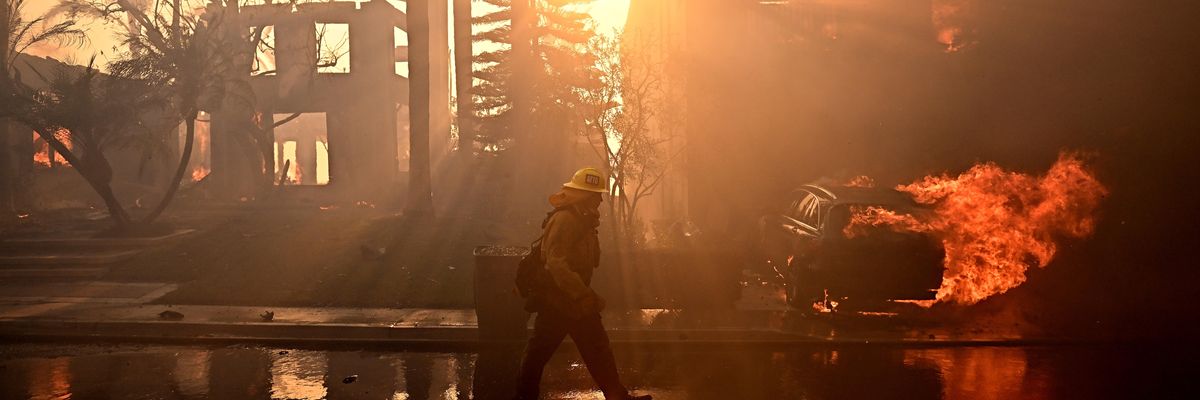As residents of the Southwestern United States prepare for dangerously high and potentially deadly temperatures in the coming days, a leading climate scientist is warning that there can be no reprieve from extreme heat until society ends its reliance on planet-scorching fossil fuels.
The National Weather Service (NWS) has issued excessive heat warnings and advisories for more than 30 million people in Arizona, Nevada, and California through the weekend.
Daytime temperatures around Phoenix, Las Vegas, and throughout Central and Southern California are projected to approach or surpass 110degF, with "little respite overnight as low temperatures are also expected to tie or break records across much of the region on Thursday and Friday nights," the NWS said.
In response to the alarming forecast, climate scientist Peter Kalmus warned on social media that this trend "is guaranteed to worsen every year until we end fossil fuels."
Kalmus also stressed how important it is to prevent every fraction of a degree of global warming, since "however hot Earth gets, it will stay that hot for hundreds of years."
The World Meteorological Organization warned last month that the planet now faces a 50% chance of temporarily hitting 1.5degC of warming above pre-industrial levels over the next five years, something that was considered nearly impossible in 2015.
Despite recent research showing that limiting global temperature rise to 1.5degC by 2100 requires immediately halting the construction of new oil and gas infrastructure and shuttering many existing sites, a new analysis found that government responses to the energy shock caused by Russia's war on Ukraine have so far revolved around expanding fossil fuel production rather than expediting a worldwide clean energy transition.
"Extreme heat is America's leading weather-related killer, and Phoenix, in Maricopa county, is the deadliest city," The Guardianreported Thursday. There were 339 heat-related deaths in the county last year--up 70% from 2019--and the medical examiner is already "investigating 30 possible heat-related deaths dating back to April."
Phoenix's daytime average temperature for June was 108.2degF in 2021, an increase of more than 7degF over the 1900-1950 average. The city's nighttime average temperature for the month, meanwhile, has surged by 13degF over the 1900-1950 average, hitting 82.5degF last year.
This is a major health hazard, particularly for the city's poorest residents, as "the impact of heat is cumulative and the body only begins to recover when temperatures drop below 80degF," The Guardian noted. Unrelenting extreme heat "could drive a surge in medical emergencies and deaths as people struggle to stay cool amid soaring energy prices and rising homelessness."
"The heat risk is very high which means we're likely to see deaths and illness increase, as well as costs associated with cooling," Paul Iniguez, a meteorologist with the NWS in Phoenix, told the British newspaper. "People should do everything they can to mitigate the impacts and check on folks who don't have regular social contacts."
While cooler temperatures are expected to make a brief return to the Southwest next week, the NWS forecast has triple-digit temperatures persisting in much of Texas and moving eastward into the Plains on Monday.
The National Oceanic and Atmospheric Administration warned in a report published last month that above-average temperatures are likely across almost all of the lower 48 states in June, July, and August. In addition to high temperatures, the agency predicted below-average precipitation across the West, which is already being pummeled by a historic drought.
"Dry thunderstorms are forecast for mountainous parts of southeast Arizona on Thursday, and lightning could spark wildfires in areas parched by drought," The Guardian reported. "Fire officials have warned that Arizona's wildfire season, which got off to an early start this year, could be even more devastating than in previous years."

